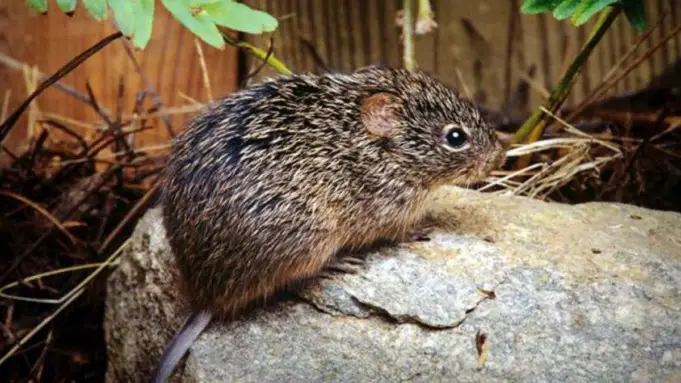Hantavirus pulmonary syndrome is a contagious disease primarily characterized by flu-like symptoms that can advance rapidly to life-threatening respiratory problems.
Several types of hantaviruses can result in hantavirus pulmonary syndrome, which is carried by numerous types of rodents, especially the deer mouse. One can become mainly infected by inhaling air contaminated with hantaviruses that can be found in rodent urine and excretes.
Because treatment options are uncommon, the best protection against hantavirus pulmonary syndrome is prevention by avoiding rodents and their habitats.
Symptoms
Hantavirus pulmonary syndrome progress through two different t stages. In the first stage, one can suffer flu-like signs and symptoms that may include:
- Vomiting
- Fever and chills
- Headaches
- Muscle aches
- Diarrhea or abdominal cramps
In its initial stages, hantavirus infection is challenging to differentiate from influenza, pneumonia, or other viral diseases. After 7 to 10 days, other severe signs and symptoms can typically become noticeable, and they generally can include:
- Low blood pressure
- Reduced heart efficiency
- Fluid accumulation within the lungs
- A cough that generates secretions
- Shortness of breath
When to see a doctor
The indicating symptoms of hantavirus pulmonary syndrome can deteriorate suddenly and may rapidly develop to be life-threatening.
If one has been around rodents or rodent droppings and have flu-like symptoms of breathing difficulties, chills, fever, or muscle aches, the person should seek immediate medical attention.
Causes
Each strain of hantavirus has a distinct rodent carrier. A major carrier of the virus is the deer mouse, responsible for most cases of hantavirus pulmonary syndrome suffered in North America.
Other hantavirus carriers can include but are not limited to the rice rat, cotton rat, or the white-tailed mouse.
Inhalation: Main mode of transmission
This virus is disseminated to people mostly through the aerosolization of viruses shed in infected rodents’ fecal matter, urine, or phlegm. Aerosolisation happens when an infection is airborne, making it easy for inhalation.
After inhalation, the virus enters the lungs and commence the invasion of the capillaries, which are tiny blood vessels which ultimately results in a leak whereby the lungs can then become flooded with fluid, that can accelerate any of the respiratory conditions related to hantavirus pulmonary syndrome.
Person-to-person transmission
People infected with the North American strain of hantavirus pulmonary syndrome aren’t infectious to other people. However, other outbreaks in South America have indicated evidence of being transmit-able from person to person, which shows variation across strains in different regions.
Risk factors
Hantavirus pulmonary syndrome is vastly common in rural areas of the western United States from around March to September(spring to summer seasons).
Hantavirus pulmonary syndrome also found in South America and Canada. Other hantaviruses occur in Asia, but this strain can cause kidney disorders instead of lung problems.
The likelihood of being infected with the hantavirus pulmonary syndrome is higher for people who work, live, or socialize in spaces where rodents live. Factors and activities that heighten risk include:
- Going into long unused buildings or shed and conducting cleaning-related activities or Housecleaning in attics or other unused areas in a home.
- People living or working in rodents infested places.
- Exposure to rodents, especially when working in pest control, utility work, or construction, can increase the risk of contracting the hantavirus.
- Hunting, Hiking Camping and other outdoor activities
Complications
Hantavirus pulmonary syndrome can rapidly become a life-threatening condition. When the lungs are filled with fluid, breathing becomes difficult. Blood pressure declines, and organs begin to fail, especially the heart.
Although, depending on the strain of the virus, the mortality percentage for the North American variation of hantavirus pulmonary syndrome is over 30%.
Prevention
Keeping rodents out of one’s home and workplace can enable reduction of risk of hantavirus infection by:
- Block access. Mice can squeeze through voids as small as 6 millimeters wide. All holes should be sealed with cement, metal flashing, or wire screening.
- All food should always be closed, and dishes should be washed promptly, as well as counters and floors. All food (including pet food) should be stored in tight-fitting containers. And garbage should be disposed of immediately or should to stored in rodent-proof containers.
- Nesting material should be reduced as bushes grass and junk should be kept far away from the building’s foundation.
- Traps should be set along baseboards, although caution should be exercised while using poison-bait traps, as the poison can harm people and pets too.
Safe cleanup procedures
Areas, where rodents have been or suspected to have been, should be sprinkled with alcohol, bleach, or other household disinfectants, thereby killing viruses and enabling the prevention of infected dust from being stirred into the air.
Once everything is damp, one should use a wet towel to remove contaminated material. Then mop and clean the area with disinfectant. Special precautions should be undertaken, such as wearing gloves and respirator, when cleaning long unused buildings with likely rodent infestations.












